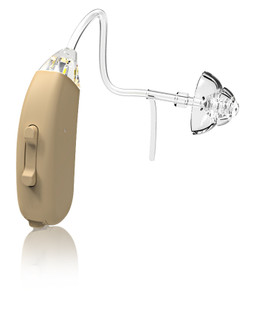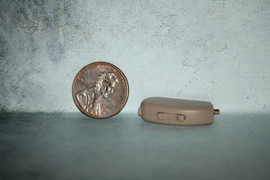Do Hearing Aids need to be adjusted for different sound environments?
Posted by DR Paul on Nov 09, 2024
Navigating the world with hearing aids can open up a realm of sounds that were once inaccessible. Whether it's the gentle rustle of leaves or the lively chatter in a bustling café, hearing aids can significantly enhance auditory experiences. However, these devices aren't one-size-fits-all solutions; they need to be fine-tuned to suit different environments and personal preferences. In this blog post, we will explore why adjusting your hearing aids for various soundscapes is essential and how these adjustments can improve your hearing experience.
When you first receive your hearing aids, they are typically set up based on a comprehensive assessment of your hearing loss. This initial setup aims to provide a balanced listening experience across various environments. However, as you begin to use them in real-world situations, you might realize that certain settings could be optimized further. For instance, what works well in quiet home settings might not translate effectively in noisy areas like restaurants or public transport.
Hearing aids today come equipped with advanced technology designed to adapt to different soundscapes automatically. These smart features are beneficial but understanding when and how to manually adjust settings can make a significant difference in your listening comfort. For example, many modern devices offer preset programs tailored for specific environments such as 'speech in noise', 'music', or 'outdoor'. Knowing which program suits each scenario ensures clarity and reduces strain on your ears.
Let's delve into some common scenarios where adjusting your hearing aid settings might be necessary:
- Quiet Settings vs Noisy Environments: Quiet places like libraries or at-home reading corners require minimal amplification since there is less background noise competing with speech sounds. On the other hand, busy environments filled with background chatter demand increased focus on filtering out unwanted noise while enhancing speech frequencies.
- Outdoor Activities: When you're outside, factors like wind noise can interfere with auditory clarity. Many hearing aids have wind-noise reduction features that should be activated during outdoor activities such as walking or cycling.
- Music Listening: Music has a rich spectrum of frequencies that differ from regular conversational tones. To enjoy music fully without distortion or missing details, switching to a music-specific program on your device could provide an enriched listening experience.
- Group Conversations: Participating in group discussions often requires heightened sensitivity due to multiple speakers and varying distances between them and you. Adjusting directional microphones or using special group conversation settings helps capture voices more effectively while minimizing ambient distractions.
- Television Watching: Television audio differs from normal conversations due to its complex mix of dialogue and sound effects layered together—using a TV program setting ensures dialogues remain clear without overwhelming background scores or effects overshadowing speech.
Adjustments don't always mean fiddling with manual controls every time; many devices now offer smartphone apps allowing seamless transitions between programs tailored by audiologists according to individual needs—a boon for those who prefer quick tweaks over diving into intricate menus!
Ultimately, adapting your hearing aids across different sound environments enhances overall satisfaction by ensuring optimal performance tailored uniquely just for you! Embracing these adjustments empowers users not only through better sound quality but also by boosting confidence levels when interacting socially—all thanks largely to due diligence paid towards understanding both device capabilities alongside personalized requirements alike! With proper knowledge under your belt coupled with professional guidance from audiologist team members whenever needed—you’re set to embark upon a fulfilling journey of rediscovering life’s beautiful symphonies anew!










